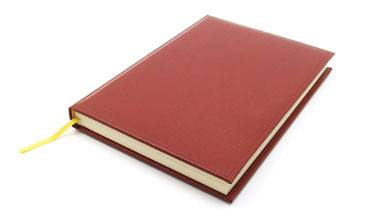If you’ve read my articles for any length of time, you know I’m an advocate of using paper task lists for your day-to-day task management needs. On a larger scale, such as for ubiquitous capture and weekly planning, I rely on technology, but I then use that large-scale system to form a daily task list on paper. This keeps me focused and burning through the tasks in rapid succession. However, there was a time when I was using paper task lists and receiving no benefit at all from it. In fact, I may have been getting even less done than when I relied on the computer to manage my daily tasks. At that point in time, my lists were long, written in small print to fit everything on one page. And I don’t know how paper size is measured in the United States, but I’m talking about an A4 sheet of paper. No wonder I got nothing done. I had days and days worth of tasks on one page. There was no direction of attention nor anything to assist in focusing on only that day’s tasks. Just a blob of everything I needed to do. If your task list looks like this, like most people’s do, you’re not really writing up task lists. These are more like a mind sweep or capture, because you’ve captured everything you need to do in one place, but haven’t yet processed it in the various appropriate ways to create lists that actually help you in getting stuff done. So, here are the rules that I implemented to take that sheet of paper that sucked me dry of motivation and focus and turn it into something that helps you get stuff done.
It’s Probably Too Big
If you’ve gone and taken a piece of paper out of your printer or you’ve used a notebook that’s fairly large (say, pages the size of a standard letter), your piece of paper is too big. You need to be limited to make good decisions. You need something about a quarter of that size. A small notebook is perfect for the job. When you’ve got a big piece of paper, you’re tempted to fill it up. That’s really where the root problem lies with many people and their inability to craft effective task lists: they see a space, and they want to fill it up. Sure, it’s instinctual. Humans, for some reason or another, want to fill every space and niche and vacuum they can find. Look at the Internet – it’s one of the biggest spaces filled with junk for the sake of filling it. The first step is to restrict yourself. This gives you limited space and scope to work with, which means you immediately put more thought and consideration into the development of your list. You think things through and only list the things that need to be done.
One Day at a Time
Often, people will try and make one task list that covers several days, or worse, just create a task list that attempts to cover everything, no matter what the timeframe for it is. You only want to cover one day. You’ve got software like Things to help you capture and sort tasks on a larger scale, but the whole point of having a small sheet of paper in front of you, in tangible form, is to help you focus on a daily basis. You need to refine your list to cover only the necessities of each day, the most important tasks that are going to move your projects further in real ways. These are high-yield tasks for the day, which are usually comprised of many smaller, seemingly low-yield, tasks. Never try to squeeze your week into one list. Heck, don’t even try for two days. You’re going to blow it. The task list will serve you best when you use it as a tool to keep you highly focused for one day at a time, and by including tasks for subsequent days, you lose the advantage of keeping highly focused. You might be tempted to jump to that more interesting task three days down the track!
Prioritize Every List
Even with less space and less timeframe going into each task list, you will probably still have quite a few tasks to juggle and will need to identify the most important tasks for the day so you can tackle them first, or otherwise plan your day so that they get done. Of course, you want to get everything on that list done and you shouldn’t include more than you can handle if you want to have any hope of feeling motivated when the time to write your next list comes around. But prioritizing helps you focus further and know which tasks can be postponed (if necessary) to complete others. If you don’t prioritize, you risk spending all day on a project that, it turns out, was far less urgent than the task just underneath it on the list. The best way I’ve found to do this is to choose three tasks and three tasks alone and place a star or asterisk next to them, just to the left (keep a margin when you start jotting your list down so that you don’t find yourself cramming your asterisks into corners!). Do not exceed three asterisks. It totally defeats the purpose. You just want to know your three, most urgent, most high-yield tasks for that day. And if you can manage to get under three asterisks, even better. You’ve got great focus!
